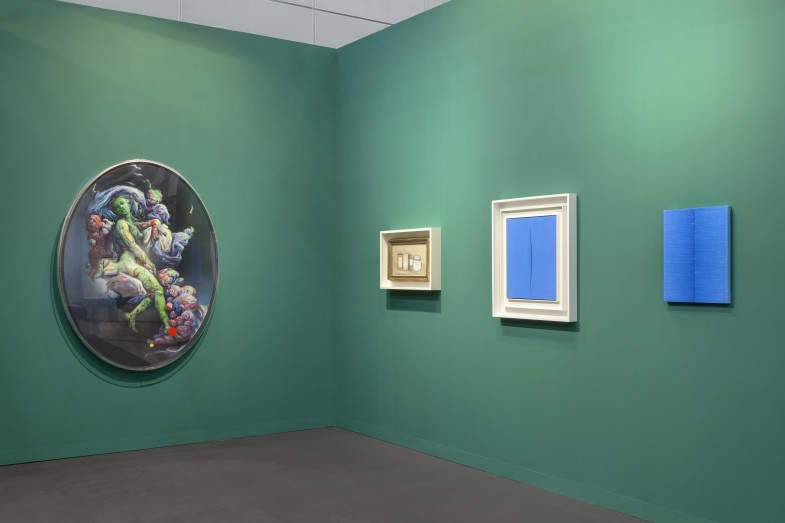Luxembourg & Dayan is pleased to announce the gallery’s third year participating in Art Basel Hong Kong. Through a wide-range of works, the presentation highlights unexpected connections between artists from the early 20th century and their contemporaries working today. Works by artists including Pablo Picasso, Egon Schiele, Alberto Giacometti, Balthus, Lucio Fontana, Giorgio Morandi, and Fernand Léger anchor the presentation in the gravitas of modernism, while artists such as Glenn Brown, Enrico Baj, Maurizio Cattelan, Irma Blank, and Günther Förg add a contemporary counterpoint.
There is a distinct dialogue that takes place between the past and present within the presentation. Lucio Fontana’s Concetto Spaziale, Attesa (1964-65), an icon of modern abstraction, features a single slash, or tagli, on a rich blue background. On the other hand, in Maurizio Cattelan’s Untitled (Zorro) (1999), the slash is imbued with a sense of whimsy and satirical self-awareness. Undoubtedly drawing from Fontana, Cattelan updates his predecessor’s work by additionally pulling from recognizable pop culture references. Similarly, the quasi-abstract, elemental forms of Giorgio Morandi’s Natura Morta (1946), which relay the newfound concerns of form, composition, and light begun at the end of the nineteenth and early twentieth century, are furthered to their extremes in works such as Günther Förg’s Untitled (1990) and Irma Blank’s Radical Writings, Exercitium (1989), who turn their focus inward instead of outward to the world around them. One of art history’s most celebrated and reproduced images, the female figure, takes on numerous iterations in works such as Balthus’ Study for “Le Salon” (1941), Pablo Picasso’s Femme assise dans un fauteuil (1941), Fernand Léger’s Deux femmes tenant des fleurs (1954), Alberto Giacometti’s Annette assise (1958, cast in 1978), Enrico Baj’s Femme assise (1966), and Glenn Brown’s God Speed to a Great Astronaut (2007) Finally, Egon Schiele’s Sitzender Bub mit gefalteten Händen (Seated Boy with Hands Clasped) (1910) provides a gender-based counterpoint to the earlier inquiries into figuration.
Though stemming from a variety of time periods, countries, and concerns both formal and thematic, the works presented at Art Basel are acutely indicative of Luxembourg & Dayan’s program and its longtime commitment to re-examining the artistic developments of postwar European artists since its founding a decade ago.


